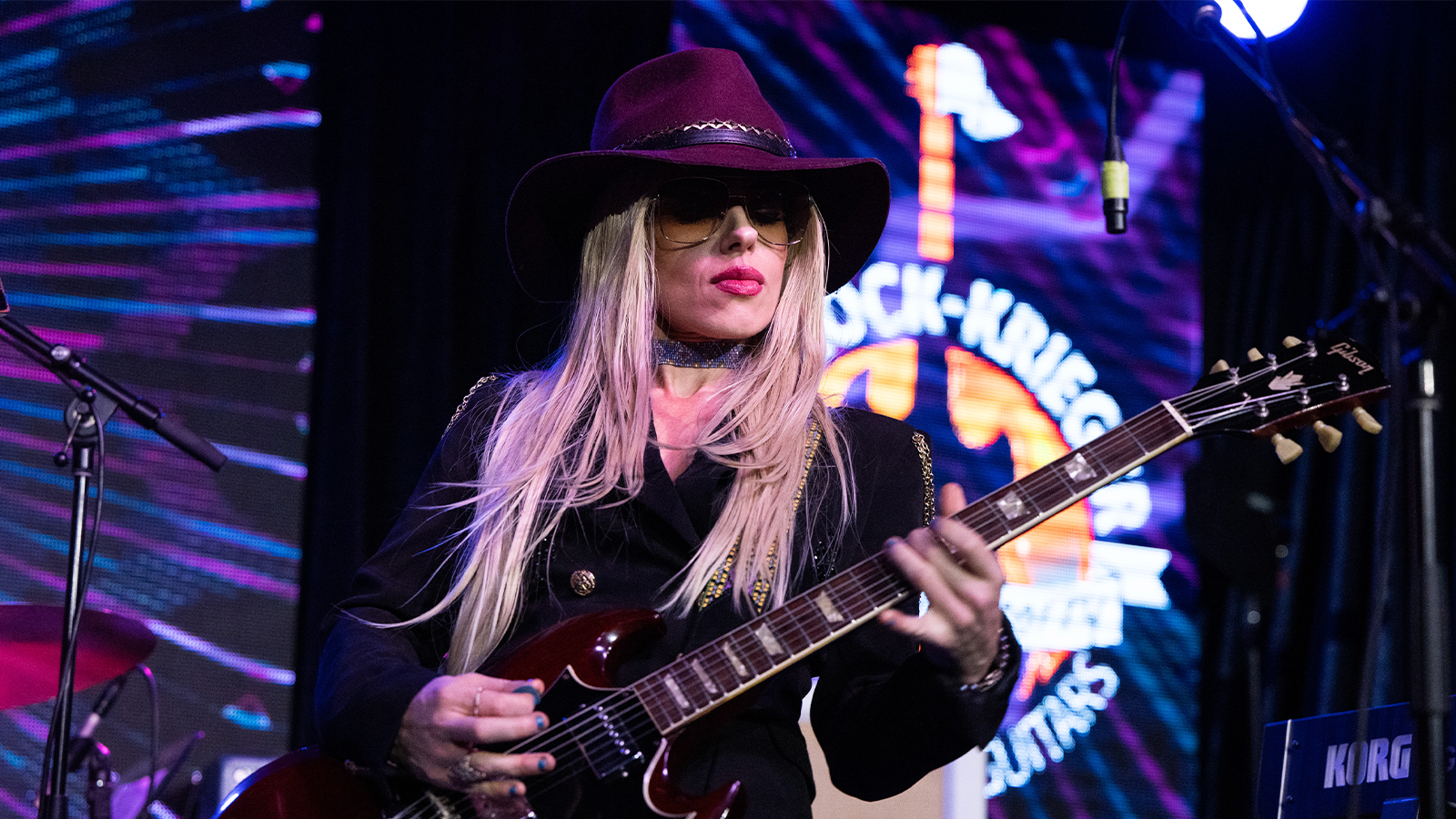Orianthi: “I wanted the verses to focus more on storytelling than aggression”
Orianthi’s fifth studio album, ‘Rock Candy’, is pretty damn sweet. The Adelaide pop-rocker tells us how it came about

It was November 2020 when Orianthi made her grand return to the limelight, dropping O more than seven-and-a-half years after she wowed the world with Heaven In This Hell. Thankfully, fans needn’t have waited so long to get around to the Adelaide pop-rocker’s fifth album, Rock Candy. The 11-tracker landed last month to well-earned acclaim from her fanbase. Its telling of her spirit as an artist, having minted it in less than two weeks with producer/bandmate Jacob Bunton. In this interview, she tells Australian Guitar how it all happened…
What was your approach to songwriting for Rock Candy?
Normally you’ll write songs over a few years and think, “This will be a good song for the record.” But instead of sourcing songs [from a wider catalogue of material], this was more like, “Let’s just make it in this time period.” [I was writing] what was on my mind at the time and just feeling inspired. It was just me and Jacob in the room, riffing it out.
‘Living Is Like Dying Without You’, I wrote that song in like ten minutes. I had the title, went into the studio, and we recorded it together, just strumming the guitars in the middle of the room. I think I put two vocal takes down on that one – it was a very live recording. It’s very honest and there, you know, because I wanted it to be that way.
The perfectionist in me is brutal, I could slave over something for years. But ultimately, this was kind of a challenge because I wanted to put that [rule] on myself and Jacob, like, “Let’s make a record this fast and let’s write a song a day.” We threw ourselves into it, and we had fun doing it, we really did. And we called it Rock Candy because it’s rock and pop.
What made you want to lean more heavily on those pop elements?
I love a good pop song. I’ve been writing pop songs since I was really young and honestly, we kind of produced it that way because I wanted the verses to focus more on storytelling than aggression. We wanted to have that sort of beat going into it, and for the vocal to be produced a certain way. I think it’s all pretty cohesive, but yeah, that song is definitely on the pop spectrum for sure.
I think it’s nice to have a bit of variety [in the catalogue] – I get bored, you know? I’m a big fan of country, I’m a big fan of blues, rock, all of that. Really, for me, it’s just about how it makes you feel. So with the production, I want it to come across the way it sounds in my mind.
With Bunton’s background as a film score composer, there’s an element of theatricality – those big, bold, attention-grabbing sounds. Was it your intention to grip people with an epic kind of sound?
Honestly, that’s a part of my personality. Not to say I’m a dramatic person, but when things hit me – like a breakup – that’s frickin’ dramatic to me. Getting your heart broken, that’s dramatic. That’s where songs like ‘Void’ and ‘Where Did Your Heart Go’ come from. Those songs were written about [the end of] a serious relationship, and Jacob would match that emotion with how he would score. I guess in those moments, like with the sounds and how we got the guitar tones and the drums and whatnot – and just the feeling of it – I wanted people to sort of feel the same way I was feeling.
All the latest guitar news, interviews, lessons, reviews, deals and more, direct to your inbox!
What can you tell me about the guitar you’re holding on the cover of Rock Candy?
That’s my new PRS Signature Private Stock model. The finish is called Blooming Lotus – it’s actually the same colour as my first Jimi Hendrix t-shirt, which was a tie-dyed one I used to wear. I was ten years old and everyone used to walk miles in front of me because it was so bright and crazy. I just thought it was such a cool colour.
It looks kind of like a lotus – there’s lotus flowers all down the neck, which is a custom shape with 24 frets – it’s a very playable, fast kind of neck, which I really dig. I’m looking at it right now and it makes me very happy to admire. It’s like… It kind of goes with Rock Candy because I feel like a kid in a candy store when I play it, because it is such a beautiful piece of art, but it also sounds incredible.
I’m very hands-on with everything that I create – especially with all the PRS models I’ve done, and then the Gibson acoustic that I came out with. That’s the one I’m holding in the promo shot, that red one, that’s my signature SJ-200 with the 345 neckline.
That was the first time Gibson have done a hybrid acoustic. The necks on the J-200s are usually pretty fat, and I like the playability of them, but I wanted a smaller neck so I was like, “Can I get an electric guitar neck on an acoustic body?” So they followed me down that rabbithole. We made that guitar together a while ago and it’s been on backorder for the past, like, two years.
